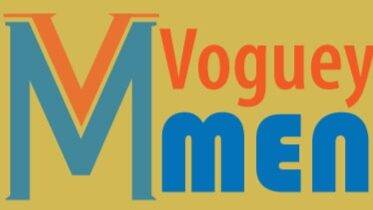The 1980s wasn’t just a decade of excess—it was a golden age of fearless reinvention in men’s fashion. From razor-sharp power suits and street-smart swagger to punk defiance and the evolution of Ivy League into polished preppy, style in the 80s thrived on contrast, confidence, and charisma. But behind the decade’s decadent charm stood a group of men who made it unforgettable—Fashion Icons of the 80s who dared to step into the sartorial unknown and turned personal style into cultural power. This article celebrates 25 such legends—visionaries, rebels, and trendsetters—whose fashion choices didn’t just reflect the times, but helped define an era still admired by style-conscious men today.
1. Gianni Versace – The Baroque Visionary Who Made Men Dazzle
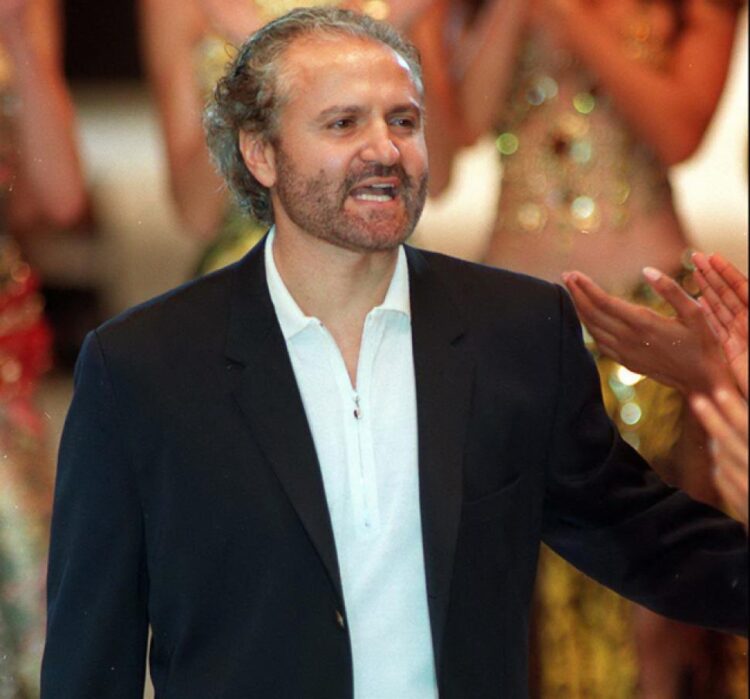
An architect of glamour, Gianni Versace revolutionized fashion with audacious prints and body-sculpting silhouettes. Founding his label in 1978, he turned his 1982 menswear collection into a style landmark—think open silk shirts, Greco-Roman motifs, and gold chains. His aesthetic exuded Mediterranean sensuality, redefining masculine allure. Versace’s legacy lives on because he made men unapologetically ornate, without diluting strength. He dressed the era’s gods—and made everyday men feel divine. image source
2. Jean Paul Gaultier – The Rule-Breaker Who Skirted Masculinity
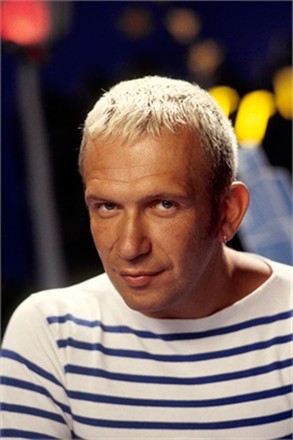
The enfant terrible of French fashion, Gaultier burst into prominence with subversive, gender-bending designs. His 1984 menswear debut sent shockwaves: pinstriped skirts, sheer tops, and sailor stripes reimagined male dressing. His rebellious fusion of punk and couture created space for flamboyance in menswear. One unforgettable runway moment: male models strutting in corsets and kilts. Gaultier’s legacy thrives because he gave men permission to play, to dress without rules, and to wear defiance with elegance. Image source: Vogue
3. Run-D.M.C. – The Kings of Rap Who Crowned Streetwear
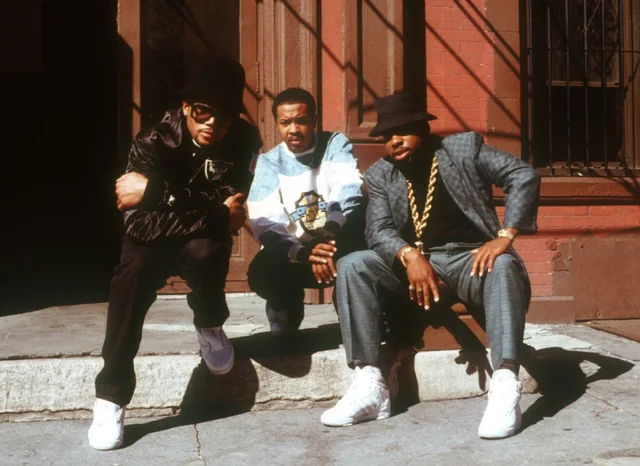
This Queens-born rap trio—Joseph Simmons, Darryl McDaniels, and Jason Mizell—weren’t just hip-hop pioneers; they changed how men dressed. With the release of Raising Hell in 1986, they brought rap into the mainstream and Adidas into the fashion arena. Their signature look—tracksuits, fedoras, and unlaced Superstars—sparked streetwear’s global rise. A defining moment came when Adidas signed them in a groundbreaking endorsement deal. Their legacy lives on in sneaker culture, proving that style can come straight from the sidewalk. Reddit
4. George Michael – The Hellenic Heartthrob Who Made Rebellion Sexy
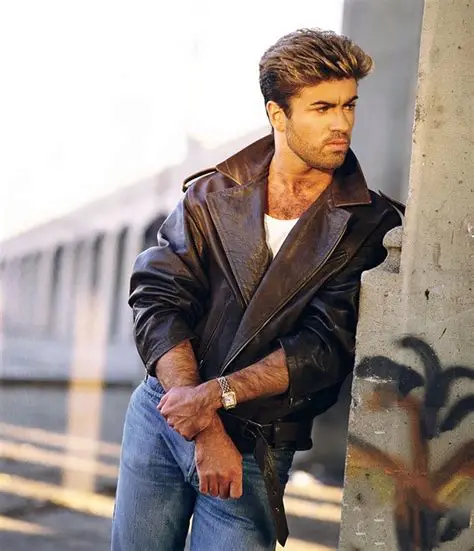
George Michael wasn’t just a pop prince—he was a fashion icon of sleek masculinity. His solo album Faith (1987) blended soul, sensuality, and one of the most iconic music video looks of the decade: leather jacket, distressed denim, mirrored aviators, and a crucifix earring. He embodied a kind of polished rebellion—tough but clean, bold but effortless. His look was copied everywhere. George’s legacy endures because he made restraint look dangerous and sex appeal feel effortless. Image source: Rediff
5. Boy George – The Androgynous Chameleon Who Dressed Like a Dream
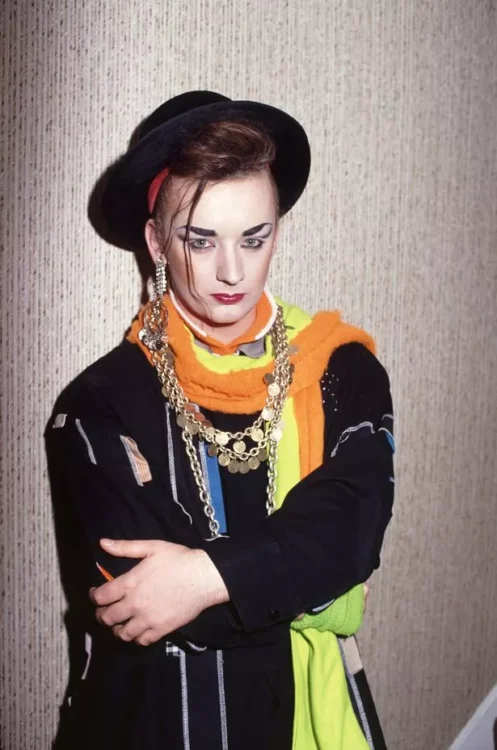
With a voice soaked in soul and a wardrobe drenched in color, Boy George turned himself into living art. As Culture Club’s frontman, his 1982 breakout “Do You Really Want to Hurt Me” wasn’t just a hit—it introduced the world to a new kind of male style. Flowing robes, vivid makeup, braids, and kimonos made him unforgettable. His early Top of the Pops appearances are still among the most visually iconic of the era. Boy George’s legacy? He made self-expression inseparable from fashion. Image source
6. Don Johnson – The Pastel Rebel Who Redefined Suits
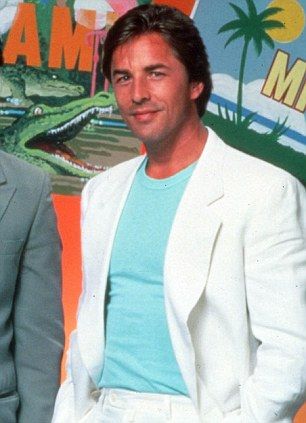
Don Johnson changed the way men wore suits. As Sonny Crockett in Miami Vice (1984), he introduced the world to pastel tailoring, sockless loafers, and T-shirts under blazers. He made Italian linen look effortlessly cool in Florida heat. No one had seen suiting so relaxed, so breezy, and yet so masculine. His pale-blue jacket and pushed-up sleeves became instantly iconic. Johnson didn’t just act stylish—he shaped a new fashion vocabulary for men. To this day, “Miami Vice style” remains shorthand for 80s suavity with a touch of rebellion. Pinterest
7. Richard Gere – The Armani Man Who Dressed the Eighties
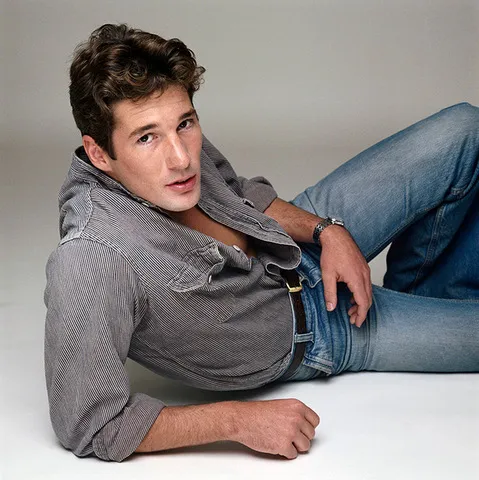
Richard Gere became the face of understated luxury with American Gigolo (1980), where he famously laid out a rack of Giorgio Armani suits like sacred tools. That film rewrote the rules of modern male elegance. Gere’s quiet charisma matched the soft-shouldered tailoring he wore, making the minimalist power suit look seductive, not stiff. One standout image—charcoal suit, open-collared shirt, unshakable cool—still defines the Armani man. Gere didn’t just wear fashion; he made it aspirational. He gave the 80s man a sleek, refined silhouette that still resonates. Image source: Iconic Images
8. Tom Cruise – The Boyish Star Who Made Fashion Look Easy
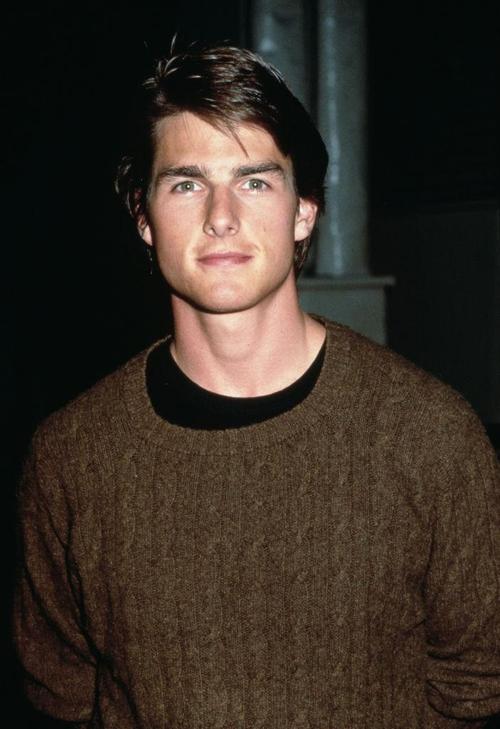
Tom Cruise’s breakout in Top Gun (1986) did more than launch a film—it launched a style era. The bomber jacket, aviator sunglasses, white T-shirt, and jeans ensemble became the uniform of youthful confidence. Cruise’s charm was casual, but calculated; he wore trends with a lived-in ease that appealed to every guy next door. Whether sprinting through Risky Business in briefs or gliding into frame with Ray-Bans, Cruise’s style moments became pop-cultural shorthand. His legacy endures because he made being fashionable feel approachable, yet irresistibly iconic. image source
9. Michael Jackson – The Icon Who Danced Through Fashion Boundaries
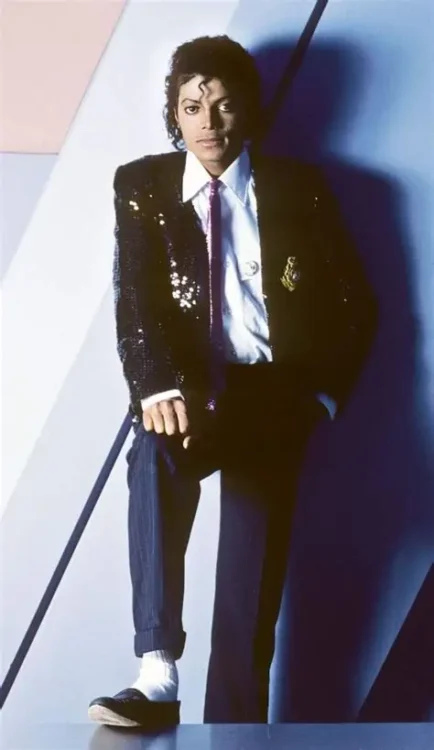
Michael Jackson’s style was as singular as his sound. His red leather “Thriller” jacket (1983) became one of the most replicated garments in history. From military epaulets to sequined gloves, every outfit became a visual signature. He didn’t follow fashion; he built his own myth through it. Each look was stage-ready, cinematic, and deeply choreographed. The fedora-and-white-sock combo during the first moonwalk remains unforgettable. Jackson’s legacy lives in his precision: every thread enhanced the performance. He turned fashion into spectacle, and spectacle into timeless style. Image source
10. Prince – The High Priest of Velvet, Lace, and Defiance
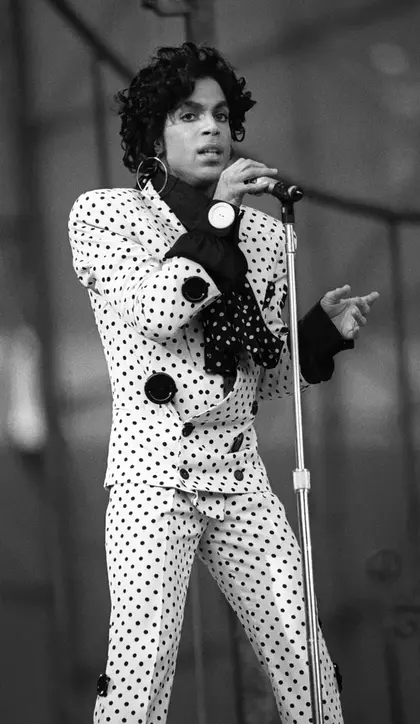
Prince (Born Prince Rogers Nelson) made femininity fierce and masculinity magnetic. With Purple Rain (1984), he blended rock, soul, and an aesthetic of sensual excess—lace blouses, purple velvet, Cuban heels, and pearls. His look defied binary norms long before it was mainstream. Who could forget the ruffled lavender suit at the American Music Awards? He didn’t just break fashion rules—he rewrote them in eyeliner. Prince’s style legacy lies in his conviction: he wore desire, eccentricity, and power on his sleeve. And he did it without ever asking for permission. Image source: Huffpost
11. Duran Duran – The Band That Made Glamorous Masculinity Mainstream
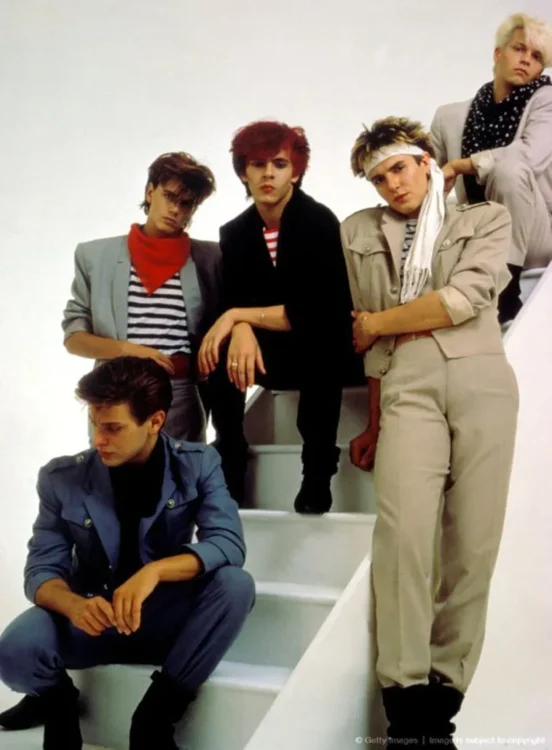
Duran Duran didn’t just sound like the future—they dressed for it. Bursting into fame with Rio (1982), they brought New Romantic flair to MTV: sharp suits, ruffled shirts, scarves, and perfectly teased hair. As a unit, they treated each music video like a high-fashion editorial. One unforgettable moment? The “Hungry Like the Wolf” safari-chic video—a mix of linen, eyeliner, and swagger. Their look defined luxe pop rebellion. Duran Duran made men glamorous without apology and showed that being in a band meant dressing like visual royalty. image source
12. Michael Hutchence – Australia’s Rock ‘n’ Roll Firebrand of Style
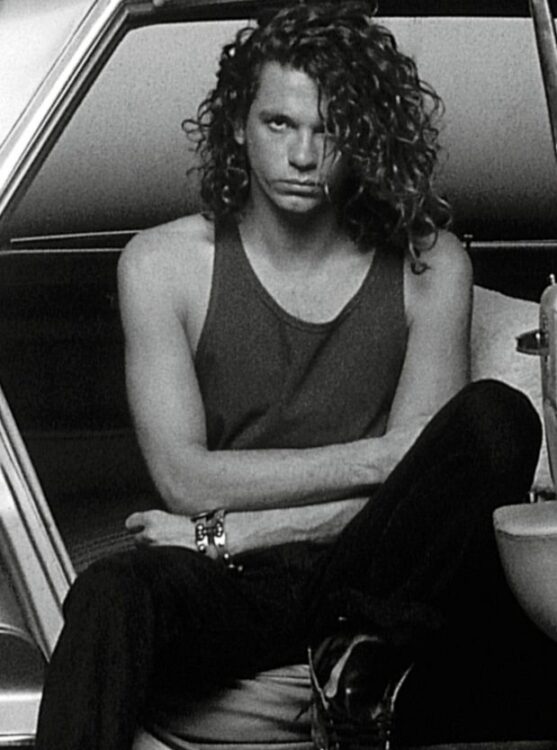
Born in Sydney in 1960, Michael Hutchence rose to global stardom as the magnetic frontman of INXS, the band that carried Australian rock onto the world stage in the 1980s. With Kick (1987) and its string of hits, he became an international sex symbol whose fashion legacy blended Aussie ruggedness with rock-star sensuality. Leather pants, flowing shirts, and a wild mane of hair made him instantly iconic. Hutchence’s fashion superpower was turning raw charisma into wearable rebellion, leaving an enduring mark on both Australian and global style.
13. Andre Agassi – The Neon Outlaw Who Rocked the Tennis Court
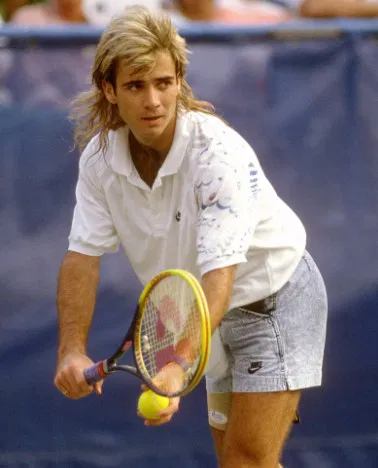
Andre Agassi didn’t just win matches—he won the fashion game. Bursting onto the tennis scene in the late 80s, he broke away from tradition with acid-wash denim shorts, neon shirts, a bleached mullet, and wraparound Oakleys. His boldest moment came at the 1988 US Open—flashing pink bike shorts beneath white tennis whites. Unheard of. He made the court a runway and rebellion a uniform. Agassi’s legacy lives on in every athlete who dares to stand out—proof that confidence, not conformity, wins the style match. image source
14. Adam Ant – The Dandy Highwayman of Post-Punk Fashion
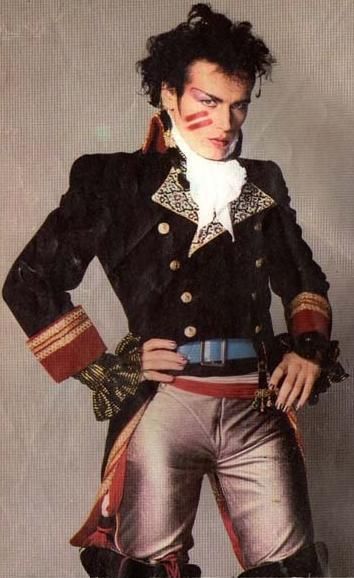
Born in 1954, Adam Ant fused punk with pageantry. His solo breakout in 1980 brought military jackets, pirate boots, and face paint to the charts. Drawing from romantic history and glam rebellion, he created a visual persona that was theatrical but sharp. His unforgettable style moment? The Napoleonic jacket and face stripe in the “Prince Charming” video. He turned fashion into fantasy and made subculture opulence a wearable attitude. Adam Ant’s legacy endures as the man who made menswear romantic, dangerous, and unmistakably his own. Pinterest
15. Morten Harket– The Nordic Virtuoso Who Made Pop Look Cool
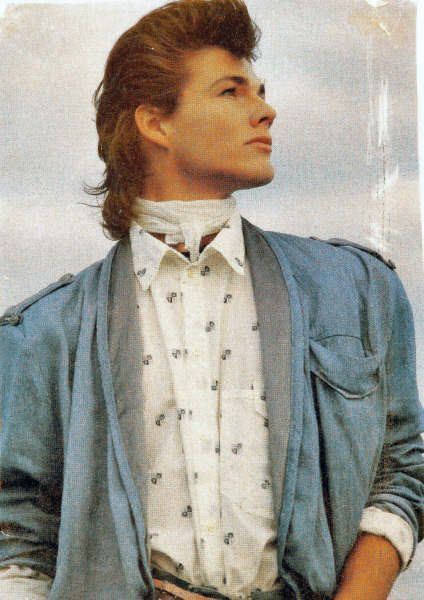
James Hetfield of Metallica brought a raw, stripped-down look to rock. As the band exploded with Master of Puppets (1986), his sleeveless tees, ripped jeans, and battle-ready leather jackets defined the heavy metal uniform. He wasn’t chasing fashion—he made attitude the look. One enduring image: roaring on stage in a torn tank top, guitar slung low, hair flying. Hetfield’s style was never about polish, but presence. His legacy remains etched in every metalhead’s wardrobe: unfiltered, functional, and fiercely anti-establishment.
16. Imran Khan – The Cricketer Who Gave Sport a Tailored Soul
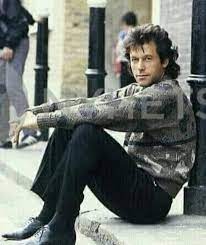
Born in 1952, Imran Khan was more than Pakistan’s cricketing icon—he was its style ambassador. Leading his nation to World Cup glory in 1992, his 1980s image fused athletic grace with urbane refinement. Off the pitch, he wore tailored suits, unbuttoned linen shirts, and carried himself like royalty. His most unforgettable look? A crisp white kurta with rolled sleeves and aviators—effortlessly elegant. Imran’s legacy endures as the man who blended Eastern poise with Western polish, and made the sportsman a fashion icon of global proportions.
17. Juan Gabriel – The Showman Who Dressed in Splendor and Soul
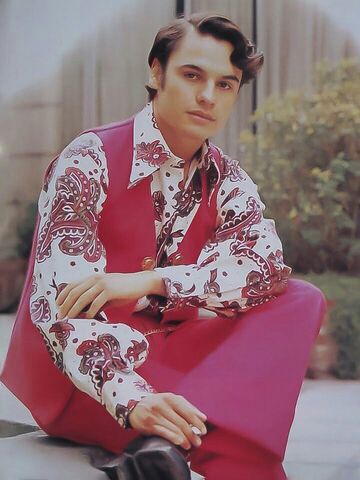
Juan Gabriel, born in 1950, reshaped Latin music—and male fashion—with flamboyant brilliance. With hits like Querida (1984), he paired poetic lyrics with dazzling costumes: sequins, capes, scarves, and high-collared glam. He turned ballads into performances and wardrobes into theater. His most iconic fashion moment? A red velvet cape worn during his Palacio de Bellas Artes concert—radiating majesty. Juan Gabriel’s legacy lies in his fearless self-expression. He proved that emotion and extravagance weren’t opposites—and that a man could shimmer and still sing from the heart. Pinterest
18. Luis Miguel – The Latin Idol Who Made Polished Cool Again
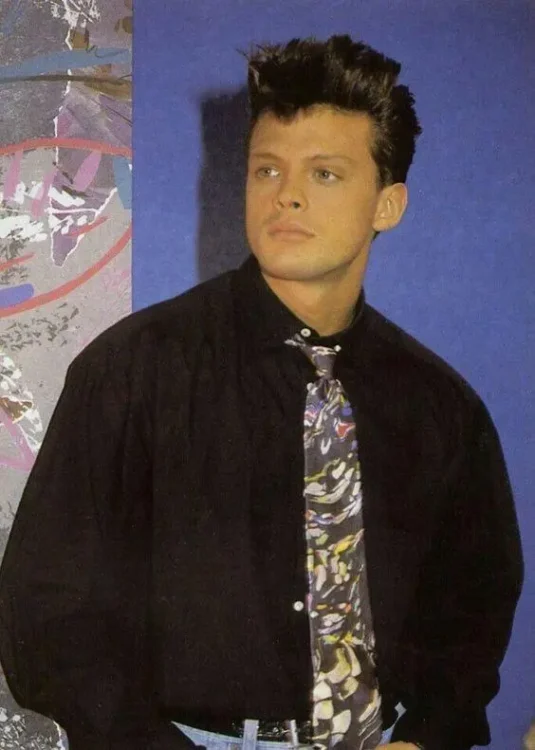
Born in 1970, Luis Miguel rose to superstardom in the late 80s with Busca Una Mujer—and with it, a look of clean-cut confidence. His aesthetic was sharp suits, white shirts, swept-back hair, and the charm of a young Cary Grant. Lots of colors but no wild flamboyance, just timeless polish. His unforgettable moment? The tuxedo-clad MTV Unplugged concert, radiating old-school class with youthful ease. Luis Miguel’s legacy is in every Latin heartthrob who followed—he redefined masculine elegance, giving romance a uniform of style and restraint.
image source: cultura colectiva
19. Miguel Bosé – The Shape-Shifter Who Made Fashion Intellectual
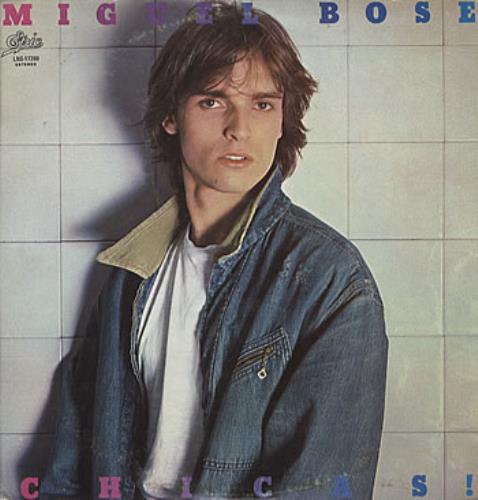
Miguel Bosé, born in 1956, was Spain’s art-pop provocateur. With albums like Bandido (1984), he played with identity through sound and style—cropped jackets, metallic fabrics, and androgynous silhouettes. His fashion was sleek but enigmatic, often ahead of its time. One defining image? His slicked-back hair, black leather trench, and sculptural cheekbones—a vision of gender fluidity with European finesse. Bosé’s legacy lies in his refusal to be boxed in. He made fashion cerebral, romantic, and quietly revolutionary—proving men’s style could be a question, not just an answer. Pinterest
20. Chow Yun-fat – The Stylish Face of Heroic Bloodshed Cinema
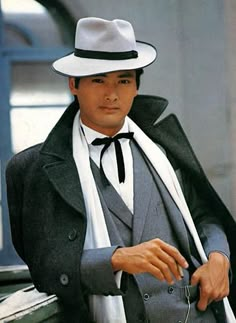
Born in 1955, Chow Yun-fat rose to global prominence with John Woo’s A Better Tomorrow (1986), his magnum opus that cemented him as Asia’s biggest movie star of the 1980s. Across Hong Kong and mainland China, no actor matched his popularity, and his fashion became legend: sharp suits, flowing trench coats, and the ever-present sunglasses that turned gangster chic into aspirational style. His fashion superpower lay in blending effortless cool with quiet masculinity, creating a look that influenced men across Asia and captured Hollywood’s imagination.
21. Jeff Aquilon – The First Male Supermodel Who Made Clean-Cut Cool
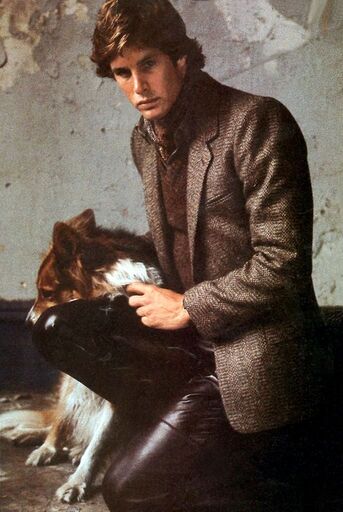
Born in 1959, Jeff Aquilon was the original face of male beauty in high fashion. Discovered by Bruce Weber, his all-American looks graced Calvin Klein and Valentino campaigns throughout the early 80s. He brought athletic elegance and quiet sensuality to a fashion world still figuring men out. His most iconic image? Reclining in a white tank top, serene yet strong—a template for masculine allure. Aquilon’s legacy is lasting because he was the blueprint: before the term “male supermodel” existed, he embodied it with subtle, sculpted grace.
22. Sylvester Stallone – The Muscle Icon Who Made Tank Tops Legendary
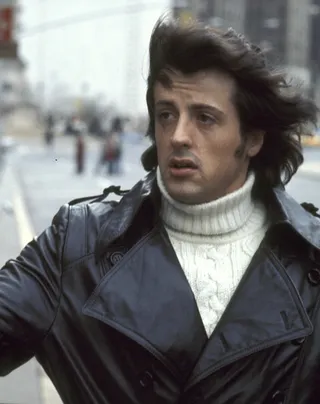
Born in 1946, Sylvester Stallone shot to superstardom with Rocky and Rambo—films that made grit heroic. But his impact extended to fashion: ripped tank tops, headbands, and military jackets became symbols of 80s masculinity. His defining look? Shirtless under a flak vest, sweat gleaming, strength personified. Stallone didn’t follow fashion; he embodied a new male archetype—tough, raw, visually iconic. His legacy persists in every gym-to-street aesthetic. He made musclewear aspirational long before athleisure had a name, and proved power could be wearable. image source: GQ
23. Hiroshi Fujiwara – The Silent Architect of Global Streetwear
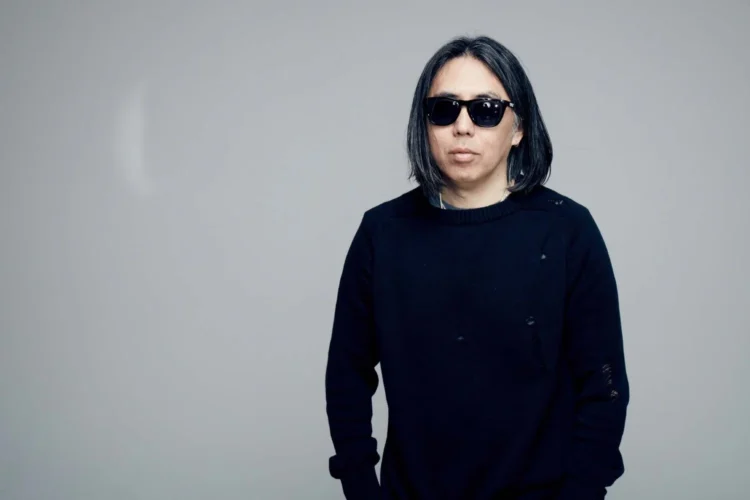
Born in 1964, Hiroshi Fujiwara quietly rewired men’s fashion from Tokyo. A DJ, designer, and cultural bridge, he helped shape the Ura-Harajuku scene and mentored brands like A Bathing Ape and Fragment. Though his rise was subtle in the 80s, his signature look—oversized denim, layered flannels, beat-up sneakers—foreshadowed streetwear’s global takeover. One iconic image? A flannel shirt, camera slung crossbody, Nikes worn in, not pristine. Fujiwara’s legacy lies in influence, not spotlight. He made subtlety cool and left behind a blueprint every hypebeast now walks. image source
24. Jon Bon Jovi the Rock God of ’80s Glam.
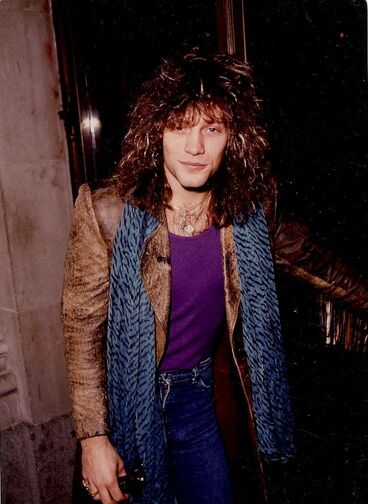
Jon Bon Jovi was a definitive male fashion icon of the 1980s, embodying the era’s signature hair metal aesthetic. His crowning achievement, leading Bon Jovi to global superstardom with “Slippery When Wet” (1986), cemented his look as widely influential. A memorable style moment was his ubiquitous presence on MTV, rocking massive, teased hair, ripped denim, leather jackets, and long, flowing scarves, effortlessly blending ruggedness with glam-rock flair. He defined the ultimate arena-rock frontman style.
25. Billy Idol – The Bleach-Blond Rebel Who Made Punk Look Polished
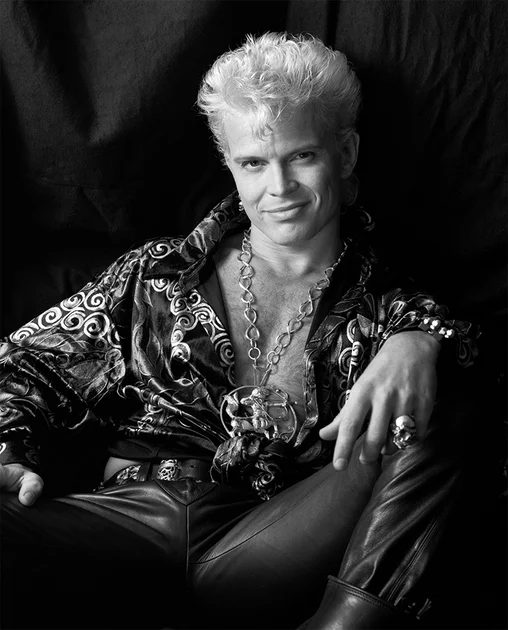
Born in 1955, Billy Idol brought punk snarls into pop charts—and leather pants into the fashion mainstream. Rising to solo fame with Rebel Yell (1983), he paired spiked platinum hair, black leather pants, and fingerless gloves with a rock-and-roll smirk that made chaos look calculated. His most iconic look? Shirtless under a black leather vest, lip curled, chained and snarling in “White Wedding.” Idol’s legacy endures because he made rebellion camera-ready. He didn’t just wear punk—he made it seductive, cinematic, and completely unforgettable. image source
These 25 icons didn’t just influence what men wore; they reshaped how men thought about style, masculinity, and individuality. Their legacies continue to echo through runways, wardrobes, and pop culture, reminding us that fashion is never just surface—it’s statement. As trends come and go, the spirit of 80s style endures: bold, diverse, and endlessly expressive. Here’s to the men who wore it like they meant it—and to the era that dressed a generation with unapologetic flair.
